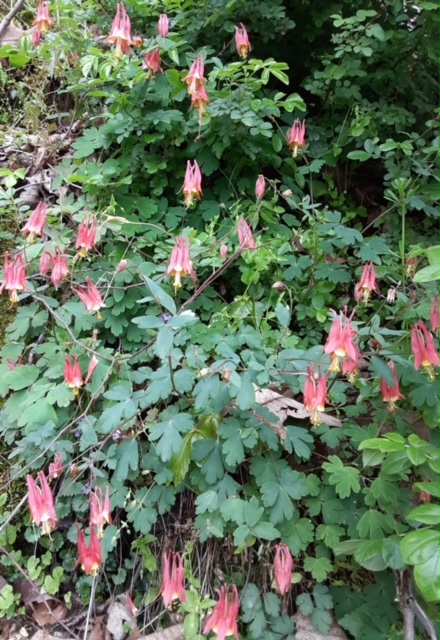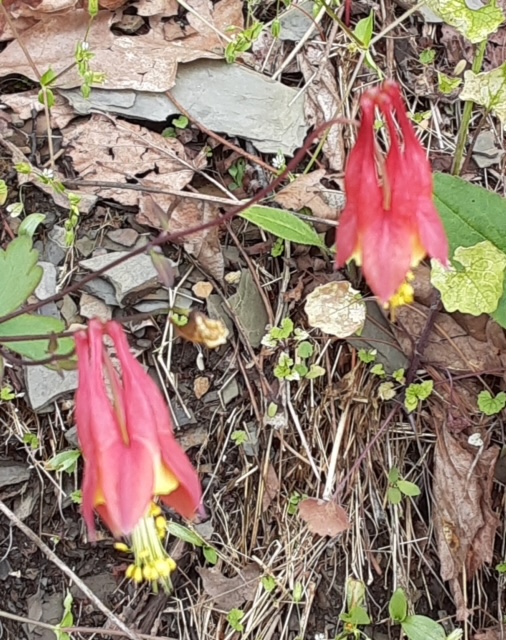By: Susan Sprout
While walking or riding along hillsides, cliffs, or ledges, set your mind to scan for red. Our native Wild Columbine is blooming now! It is a thick-tubered perennial plant whose roots snuggle down in shale crevices holding it tight to slippery slopes. A basal rosette of leaves developed last summer has stayed green during the winter and thus provided the energy for early blooming.

Columbine’s scientific name of Aquilegia canadensis is based on Latin for “eagle” because of the talon-like shapes of the red spurs holding nectar and enticing long-tongued insects and hummingbirds to visit and pollinate its blossoms. Each petal with its long, narrow spur at the back has also been likened to pigeons, their heads together and drinking from a bowl…that’s where the common name Columbine comes from.

After being pollinated, the bell-shaped, drooping flower tilts upward and forms a brown, oval pod that will slowly release seeds into the wind. Its leaves alternate and are made up of three lobed or cleft leaflets. They seem to have a bluish tinge, perhaps created by light shining off the lightly fuzzy leaves. Once you have found the plant, check the bright spurs for holes, chewed there by insects, maybe bumblebees, seeking a short cut to the nectar.

